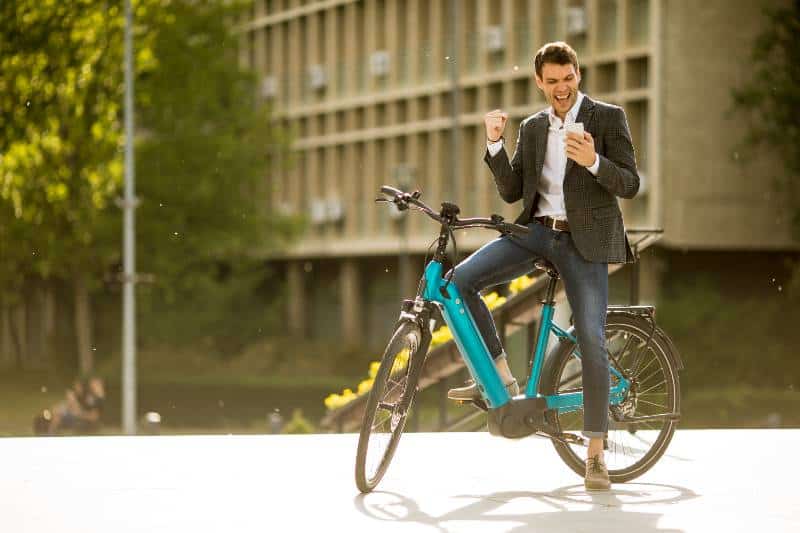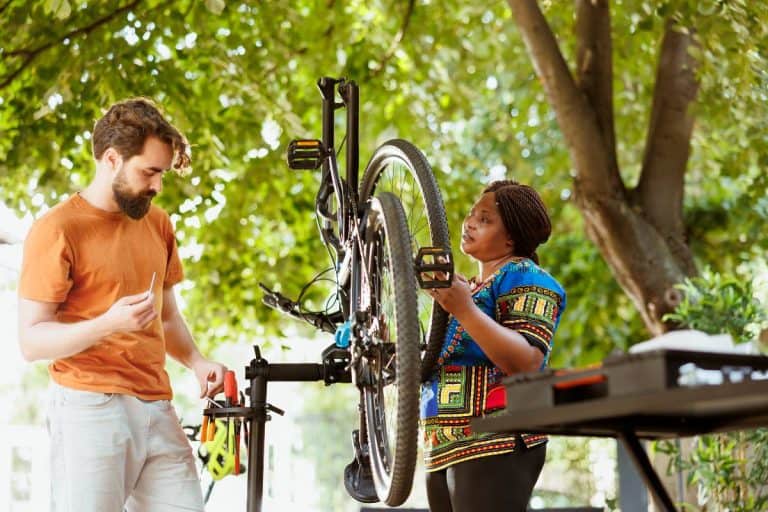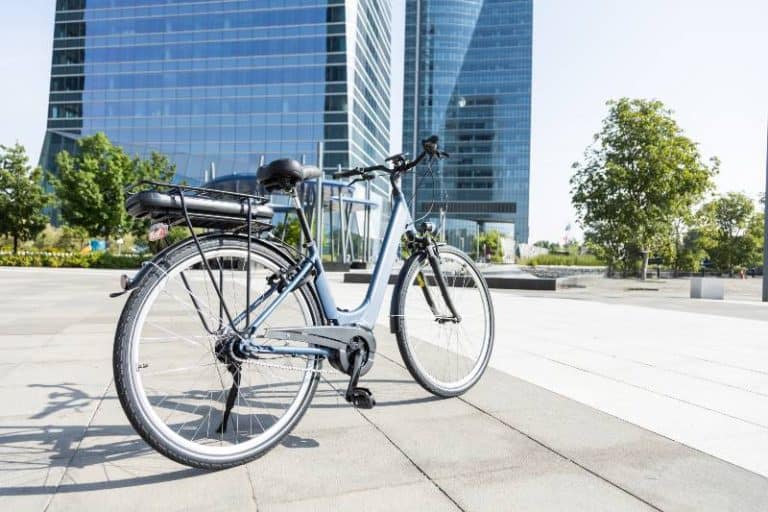E-Bike 101: A Beginner’s Buying Guide
Looking to make the jump into electric biking but don’t know what features to look for? No worries, we’ve got you covered! With this guide, experienced and beginner e-bikers alike can confidently shop around knowing they are selecting a quality bike that meets their skill level. From components, frame geometry, and battery technology – read along as discover more about choosing the perfect ride made just for you. Time to start your adventure in exploring all that e-biking has to offer – it’s gonna be an exciting journey!
For those looking to enter the world of e-bikes, it pays off to weigh your needs and priorities. Motor power & battery range may vary with whatever suits you best; frame materials & suspension types offer comfort as well as safety requirements while there are also legal factors such as budget constraints or helmet laws that come into play – all of which should be taken into account before making a purchase!
Key Takeaways
- When selecting an electric bike for beginners, look for components that are easy to use and maintain, such as adjustable handlebars and saddles.
- Choose a frame geometry that is comfortable to ride, with low standover height and plenty of clearance.
- Consider battery technology to ensure you get enough range on your rides. Select motor power according to the terrain you plan to ride on.

Motor and Battery
E-bikes have been a game-changer in the world of sustainable and efficient transportation, and at the heart of their impressive capabilities are two essential components: the motor and the battery. The motor plays a critical role by lending a helping hand as you pedal, making your ride smoother and less strenuous.
Meanwhile, the battery serves as the powerhouse, fueling the motor and bringing it to life. Delving deeper, there are two motor varieties: the hub motor and the mid-drive motor. The former, which resides in the wheel hub, is the more budget-friendly option, but it tends to throw the bike’s balance off-kilter.
On the other hand, mid-drive motors, nestled near the pedals, boast better balance and superior performance, making your e-bike experience all the more enjoyable and versatile. With these two essential components working in perfect harmony, you’re sure to ride smart and feel great on your e-bike adventures.
Motor power
With e-bikes, it’s all about the watts! The higher the wattage of your motor, the more powerful and robust your ride will be. If you’re a fan of taking on rugged terrain or scaling steep hills then selecting an engine with 750W is sure to provide assistance where needed.
Battery range and capacity
The battery, one of these innovative bikes’ most important components, will determine how far you can go. You’ll typically be able to cover anywhere from 20 – 60 miles per charge depending on factors like terrain and rider weight; however, having a larger capacity battery leads to longer range possibilities.
Battery range and capacity
It’s important to consider how long it takes the battery to charge up. Smaller e-bike batteries usually need 3-6 hours, while larger models may take 8 or more. To make sure you can get a full charge every time, double-check that the charger is compatible with your particular model. That way all those long rides will never be cut short due to an empty battery.
Frame and Suspension
Frame materials
With so many options out there, e-bike enthusiasts face the exciting dilemma of choosing what material to use for their frames. Aluminum is a popular pick due to its lightweight and affordability, while steel frames offer great strength and comfort that comes with being slightly heavier. If you’re looking for optimal performance but don’t mind splurging on your investment in an e-bike, carbon fiber or titanium are both excellent choices – they provide remarkable lightweight power along with unbeatable style.
Suspension types
Exploring the world of electric bicycles, one cannot ignore the critical role suspension systems play in enhancing the overall cycling experience. The three main types of suspension systems found on e-bikes – front, rear, and full suspension – not only offer choices in style and personal preference but also cater to different cycling needs.
A front suspension system primarily focuses on providing stability and shock absorption through its specialized suspension fork, while a rear suspension system takes it a step further by incorporating a rear shock for enhanced comfort and flexibility.
Full suspension systems, undoubtedly the most versatile option of the three, expertly combine both front and rear shock absorption mechanisms to ensure a consistently smooth and enjoyable ride.
Often known as ‘hardtails’, e-bikes equipped with only a single suspension system (usually front suspension) offer a slightly more budget-friendly and low-maintenance choice. In essence, the type of suspension system a biker chooses can significantly influence their riding experience, making it imperative to consider individual requirements and preferences before making a decision.
Brakes and Gears
Brake types
E-bikes have come a long way in revolutionizing the cycling market, offering a smooth and reliable mode of transportation while reducing the physical effort required by folding bikes for the rider.
One fascinating aspect of e-bikes that has piqued the interest of avid cyclists is the transition from traditional rim brakes to the more advanced disc brake system. Rim brakes have long been a trusted component, relying on the consistent force applied to the wheel’s outer edge, rendering e-bikes efficient and safe.
However, with technological developments and innovations in cycling components, many electric bike manufacturers have embraced the superior disc brake system, promising enhanced performance and safety. This change has prompted a surge of curiosity among cyclists, as they now face the challenge of choosing between the two systems when purchasing or upgrading their e-bikes.
Faced with this pivotal decision, it is essential for e-bike enthusiasts to delve deeper into the characteristics of both rim and disc brakes to make an informed preference that truly aligns with their riding preferences and requirements.
Gear systems
E-bikes have revolutionized the cycling world, offering riders the flexibility to choose between two primary types of gear systems: derailleur gears and internal geared hubs. Derailleur gears, undoubtedly the more popular choice, allow cyclists to navigate through the open countryside with ease by expertly utilizing the combination of chainrings, sprockets, and chains.
The presence of front and rear derailleurs weight electric bikes ensures the ability to adjust gears on the go, making the most of every incline and optimizing the rider’s personal energy as well as the e-bike’s motor power. Innovations like gear levers and electric gears, which change gears using wireless communication, have further enhanced the adaptability and convenience of derailleur gear systems.
However, this advanced technology comes with a cost – the need for regular maintenance and care to keep up with the demands of the modern e-bike enthusiast.
Internal geared hubs, which derive their name from the fact that they are positioned inside the rear hub of the rear wheel of your e-bike, use a planetary gear system for switching gears. With this type of transmission, multiple-toothed wheels rotate around a single center wheel in order to adjust and create the desired level of torque.
Whether you are waiting at a stoplight or just want to switch gears quickly, operating with a rotary shifter on your handlebars is an effortless process. Internal geared hubs have become increasingly sought out in recent years due to their ample range of gear options while taking up minimal frame space.
When compared to derailleur gears, the internal geared hub has many advantages that make it a great choice for anyone. It is very easy to operate and requires minimal maintenance, whilst running with virtually no noise.
Likewise, some of these hubs feature stepless gear changes which allow you effortless transitioning between speeds without having to worry about how many gears or what speed you’re in!
Comfort and Convenience
Saddle and handlebars
The saddle, or bike seat, is an important factor in rider comfort. Look for a saddle that is well-padded and properly sized for your body. Some e-bikes come with adjustable suspension seats for extra comfort. Handlebars also play a role in rider comfort, with options ranging from upright handlebars to drop bars. Upright handlebars provide a more relaxed riding position and are good for commuting, while drop bars provide a more aerodynamic riding position and are good for speed.
Lights and reflectors
E-bikes are required by law to have lights and reflectors for safety reasons. Look for an e-bike with integrated lights, which are built into the frame or handlebars, and make sure they are bright enough to provide visibility in low-light conditions. Reflectors are also important and should be located on the front and rear of the bike, as well as on the pedals and wheels.
Accessories
There are a variety of accessories available for e-bikes to improve comfort and convenience, including:
- Bike racks: for carrying cargo or groceries
- Fenders: to keep water and mud off of the rider
- Locks: for security when parking the bike
- Baskets or panniers: for carrying items while riding
- Phone mounts: for easy navigation or music playback
- Kickstands: for easy parking and storage
When choosing an e-bike, consider which accessories will make your riding experience more comfortable and convenient. Some e-bikes come with these accessories already installed, while others require separate purchase and installation.
Safety and Legal Requirements
Helmet laws
It is essential to review the guidelines for helmet use in your state as these vary. Despite this, wearing a helmet when riding an e-bike on public roads and trails are typically necessary by law. Even if helmets are not mandatory where you live, it’s still recommended that you wear one to protect yourself from potential harm.
Speed limits
E-bikes are categorized by their highest speed and power potential, with a range of related laws that follow accordingly. Generally, e-bikes must stay below 20 mph (32 km/h) to be legally considered bicycles. However, once an e-bike breaches this benchmark it is then subject to motor vehicle legislation.
Bike registration and insurance
In some areas, e-bikes are required to be registered with the local government and have insurance coverage. This varies by location, so be sure to check your local regulations. Even if registration and insurance are not required by law, it’s still a good idea to have them for your own protection.
In addition to these specific regulations, e-bike riders should also follow general safety guidelines, such as wearing reflective clothing, using lights and reflectors for visibility, following traffic laws, and using caution when riding in traffic. It’s important to prioritize safety when riding an e-bike to prevent accidents and injuries.
Budget and Maintenance
Budget considerations
E-bikes have an array of features, so there’s no one size fits all. If your main goal is to commute or stay active consistently on two wheels then you may want to consider investing in a higher-end model with longer battery life and suspension for added comfort. However, if you’re just looking for something that’ll give the occasional thrill ride — don’t worry – entry-level models start at only a few hundred dollars. It’s important to determine what type of biking experience best suits your lifestyle before making any purchase decisions.
Maintenance requirements
Like any bicycle, e-bikes require regular maintenance to keep them in good working order. Some key maintenance tasks include:
- Keeping the tires inflated to the recommended pressure
- Cleaning the bike regularly to prevent rust and corrosion
- Lubricating the chain and other moving parts to reduce wear and tear
- Checking the brakes for proper function and adjusting them as needed
- Checking the battery level and charging as needed
It’s also important to have your e-bike serviced by a professional mechanic periodically to ensure that all components are working properly and to address any issues that may arise. Regular maintenance can help prevent costly repairs and ensure that your e-bike lasts for many years.
When budgeting for an e-bike, be sure to factor in the cost of regular maintenance and potential repairs. It’s also a good idea to research the availability of replacement parts and service providers in your area before making a purchase.
If you want to know the top misconceptions about e-bikes, read here! E-bikes are one of the most popular forms of transport in cities, but there have been some myths surrounding them.
What to look for when buying E-Bikes for Beginners FAQs
What types of E-bikes are available?
E-bikes come in a variety of styles and configurations. The most common types are mountain bikes, road, hybrid, folding, cruiser, and cargo bikes.
How do I choose the right motor and battery for my E-bike?
The motor and battery you choose for your E-bike should depend on your individual needs. Factors to consider include weight capacity, speed, range, terrain, and budget. It’s important to do your research before purchasing an e-bike to find the right combination of features that best suits your lifestyle.
What should I consider when choosing a frame and suspension?
When selecting a frame and suspension for your E-bike, it’s important to think about the type of riding you plan to do. If you’re going off-road or tackling hills, then a full-suspension bike with larger tires is recommended. For commuting on flat terrain, a lighter frame with narrower tires may be appropriate.
What types of brakes and gears are available on E-bikes?
E-bikes typically come with either rim or disc brakes and one to three gears. Rim brakes require less maintenance but provide less stopping power, while disc brakes are more powerful but require regular maintenance. The number of gears you need will depend on the type of riding you plan to do; mountain bikes typically have three gears, while road bikes usually have one.
How can I ensure maximum comfort and convenience on my E-bike?
To ensure maximum comfort and convenience on your E-bike, be sure to choose a frame and suspension that are suited to your individual needs. Additionally, look for features such as adjustable handlebars, shock-absorbing seats, integrated lights, and mudguards.
What are the legal requirements for riding an E-bike?
The laws regarding these electric motors and bicycles vary from state to state. In most areas, e-bikes are classified as either “low-speed electric bicycles” or “motorized bicycles” and each classification has its own set of regulations. It’s important to familiarize yourself with the laws in your area before riding an e-bike. Additionally, some states require riders to wear helmets and may have age restrictions for operating an e-bike.
Conclusion
To sum it up, electric bikes can make your ride smoother and longer with fewer stops. The motor, battery range, and capacity are all important components to consider when selecting an electric bike for your particular needs.
Also, there are various types of brakes and saddle and handlebar designs that should be considered for comfort and a safe riding experience. With the proper research, you can be sure that you find an electric bike that suits your requirements perfectly. Looking for more tips on how to choose the right bike? Sign up now for our newsletter to receive the latest information on electric biking!






